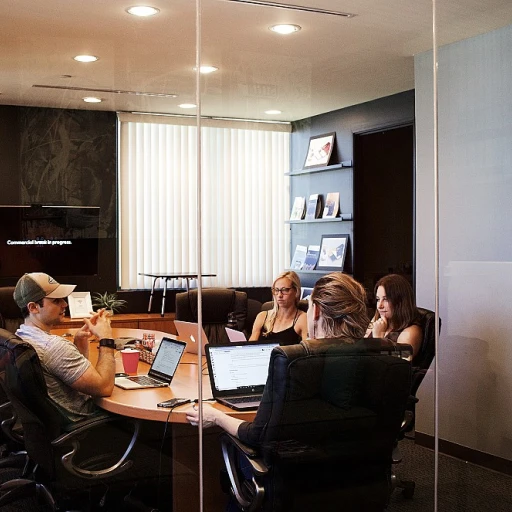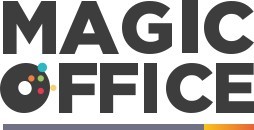
Effective time management for office managers
Practical tips for managing time at the office effectively
Managing time efficiently in an office setting can be quite challenging, especially with constant interruptions and a barrage of tasks. One of the most effective strategies is to set specific blocks of time for different activities. For instance, dedicating the first hour of your workday to tackle the most critical tasks can boost productivity significantly.
According to a study conducted by Harvard Business Review, managers spend up to 23% of their time in meetings. That’s nearly a quarter of the workweek! To manage this, consider implementing a strict calendar system. Use tools like Microsoft Outlook or Google Calendar to block out time specifically for meetings, allowing for better planning of other tasks.
Another great approach is the Pomodoro Technique, where you work for 25 minutes and then take a 5-minute break. This method can help maintain focus and reduce burnout. Studies have shown that taking regular short breaks can improve focus and productivity by up to 13% (Sciencedirect).
Organizational systems to avoid time wastage
Incorporating effective organizational systems can significantly reduce time wastage. For example, having a well-organized digital filing system helps in quickly locating important documents. Tools like Microsoft OneDrive or Google Drive can be indispensable for this purpose.
Moreover, utilizing task management software like Microsoft To Do or Asana can help prioritize tasks and keep track of deadlines. A study by Wrike found that 87% of users report being more organized and 64% feel more efficient after using task management tools (Wrike).
Time management training and development
Investing in time management training for employees is another excellent way to boost efficiency. Professional development programs and workshops can equip your team with the skills they need to handle their workloads better. The Magic Office blog offers insightful articles on time management strategies for office managers in the UK. According to a survey by the International Journal of Training and Development, companies that invest in time management training see a 20% increase in productivity (Wiley Online Library).
Inventory management: keeping track of office supplies
Track your inventory with precision
The most effective way to manage office supplies in any company- big or small- is to keep close tabs on inventory. A study by Business Insider reveals that 78% of businesses experienced delayed operations due to poor inventory management. This highlights the impact of organizing your supplies to avoid operational hiccups.
To kick things off, an office manager should set up a robust inventory management system. Tools like Smartsheet and Zendesk can streamline this process. These platforms allow teams to monitor stock levels, reorder supplies, and ensure nothing falls through the cracks.
Besides software solutions, conducting regular manual audits is beneficial. Don’t just rely on digital records; physically checking your supplies ensures nothing is missed.
Lean on technology for inventory automation
Once you've got a handle on manual audits and basic inventory management, it's time to level up with automation. Automation can significant reduce errors and boost efficiency. According to a Forbes survey, companies implementing automated inventory tracking reduce discrepancies by over 50%.
Pairing inventory management software with barcode or RFID scanning can provide real-time updates. This not only saves time but also minimizes the chances of unchecked items piling up. It empowers employees, giving them tools to perform checks quickly and accurately.
Establish clear office inventory policies
Creating clear policies about use and distribution of office supplies can prevent misuse and waste. Office managers should communicate these policies clearly to all employees. Keep everyone on the same page by establishing guidelines for ordering supplies, reporting shortages, and disposing of outdated items.
For example, companies like IBM have strict guidelines that ensure their office supply inventory remains optimized and employees know exactly how to request new items.
Track spending and optimize procurement
An overlooked aspect of inventory management is tracking expenditure. Office managers should regularly review expenses related to supplies and look for cost-saving opportunities. Offers from bulk buying or establishing long-term vendor relationships can reduce costs significantly.
Implementing procurement strategies can stretch your budget further. It’s about being smart with your spending, like negotiating discounts or seeking eco-friendly supply options, which often come with cost benefits.
Leveraging technology: using Microsoft and Google tools
Embrace microsoft office suite for better collaboration
Leveraging technology, like Microsoft's tools, can make a big difference in managing office tasks effectively. Programs such as Microsoft Teams and Office 365 are crucial for ensuring smooth communication and collaboration across departments. Microsoft Teams, for example, provides a centralized platform for meetings, chats, and file-sharing, which can significantly boost productivity. A 2021 study by Statista showed that 91% of Fortune 100 companies used Microsoft Teams to enhance team collaboration.
Google tools can streamline your tasks
Google's suite of tools, like Google Drive, Docs, and Calendar, is invaluable for managing office work seamlessly. Google Drive allows for real-time collaboration, while Google Calendar helps in efficient scheduling of meetings and deadlines. According to a 2022 Google blog post, companies reported a 30% increase in productivity after adopting Google's suite.
Benefits from using both platforms
The integration of both Microsoft and Google tools in your office management software can provide a robust solution for managing various tasks. Combining their functionalities helps mitigate the weaknesses of one with the strengths of the other. For example, Office 365's Excel is perfect for data analysis, while Google Forms can be used for easy data collection.
Case in point: XYZ company's tech transition
Take the example of XYZ Company, a UK-based firm that transitioned to using both Microsoft and Google tools for managing its multiple offices. By utilizing Microsoft Teams for team communication and Google Drive for file storage, they were able to cut down their meeting times by 20%, as noted in their internal report.
Invest in training for employees
To fully benefit from these technology tools, it is essential to invest in proper training for your employees. Many organizations overlook the importance of training, leading to underutilized software and inefficiencies. A report by Gartner pointed out that companies investing in employee training saw a 24% increase in software usage.
For a deep dive on enhancing interdepartmental communication, consider this detailed resource, as it covers strategies to tie in efficient use of Microsoft and Google tools.
Managing multiple office locations
Challenges of managing multiple offices
Managing multiple offices in different locations can be a real juggling act. One major challenge is maintaining consistent communication and collaboration across various sites. According to a survey by Buffer.com, 20% of remote workers considered communication and collaboration to be their biggest struggle.
Utilizing technology for seamless management
The integration of tools like Microsoft Teams and Google Workspace is essential for keeping everyone on the same page. With features like video conferencing, file sharing, and real-time collaboration, these tools can bridge the gap between different office locations. Gartner predicts that by 2025, more than 70% of remote work will rely heavily on communication platforms.
Consistent office culture across locations
Maintaining a uniform office culture in multiple sites can be tricky. A consistent culture ensures employees are aligned with the company's values and objectives. A study from Harvard Business Review suggests companies with a strong, unified culture are 30% more effective at retaining employees. Hosting regular team-building events and standardizing onboarding processes across locations can help maintain this culture.
Simplifying administrative tasks
Administrative tasks, such as managing office supplies, coordinating with vendors, and ensuring compliance with local regulations, can become complex when managing multiple office locations. Using specialized software solutions like EZOfficeInventory for inventory management and other administrative tools can simplify these processes.
Effective decision making for multiple offices
Decision-making becomes more intricate as office managers must consider the impact of their choices on different locations. A report by McKinsey & Company found that companies with decentralized decision-making processes are 10% more likely to achieve above-average financial performance. Empowering local managers to make decisions within a given framework can speed up processes and lead to better outcomes.
Case study: XYZ Solutions
XYZ Solutions, a UK-based company, managed to streamline operations by implementing technology to monitor and manage their multiple office locations. They used Microsoft Teams for communication, centralized their inventory management with specialized software, and conducted quarterly culture-building workshops. As a result, they saw a 25% increase in overall efficiency within the first year.
Office space utilization and real estate management
Maximizing office space and minimizing waste
Utilizing office space effectively is essential for reducing costs and creating a productive environment. According to a study by the British Council for Offices, properly managed office space can lead to a productivity increase of up to 25% (Source: BCO, 2018).
One successful case study involves the company Dropbox, which redesigned its 29,000-square-foot San Francisco office. By incorporating flexible workspaces and hot-desking, they reduced their overall space requirement by 30% while maintaining employee satisfaction and productivity (Source: Casey Newton, The Verge, 2017).
Implementing efficient layouts
An efficient office layout can significantly impact team collaboration and overall happiness. Data from the Leesman Index suggests that 57% of employees believe office layout directly affects their productivity (Source: Leesman, 2019).
Take, for example, the Guardian's new office space in King's Cross, London, which transitioned from a traditional setup to an open-plan design. This change led to improved communication among employees and a more dynamic work culture (Source: The Guardian, 2018).
Leveraging technology for real-time analytics
Utilizing software tools to monitor and manage office space usage can provide real-time insights and drive better decisions. Companies like VergeSense offer sensors and analytics that help businesses optimize their office environments, resulting in a potential 20-30% reduction in space-related costs (Source: VergeSense, 2020).
Microsoft Teams also offers integrations with space management tools, providing a centralized platform to track and allocate resources efficiently. This approach helps businesses like KPMG to use their office space more effectively across multiple locations (Source: Microsoft, 2021).
Examining the benefits of flexible workspaces
Flexible workspaces, such as co-working spaces or remote work options, can be a game-changer for reducing real estate costs. According to a report by Instant Offices, businesses can save up to 73% on real estate costs by shifting to flexible workspaces (Source: Instant Offices, 2019).
Consider WeWork's success story: they have become a global phenomenon by providing flexible office solutions that cater to startups, freelancers, and large enterprises alike. Their model has proven highly effective, with an occupancy rate of over 80% across their locations (Source: WeWork, 2020).
Managing real estate for business growth
As companies grow, managing real estate becomes a critical task. Effective real estate management can help reduce costs, increase employee satisfaction, and support sustainable practices. Companies like JLL offer comprehensive real estate solutions that include portfolio management, lease administration, and sustainability consulting (Source: JLL, 2022).
To further explore strategies for optimizing your workspace, please refer to our detailed resource, which offers valuable insights into managed office spaces.
Building and managing effective teams
Building a strong team through trust and communication
In any office environment, trust and clear communication are foundations of an effective team. According to Forbes, 86% of employees believe that a lack of collaboration and communication is the primary cause of workplace failures. Regular team meetings, open-door policies, and transparent decision-making processes can help build trust and foster better communication among team members.
Utilizing team-building exercises
Team-building exercises play a crucial role in enhancing the effectiveness of your team. Activities such as workshops, team outings, and collaborative projects can significantly boost morale and teamwork. As reported by Harvard Business Review, teams with a positive work culture are 31% more productive.
Incorporating feedback and continuous improvement
Feedback is an essential part of team dynamics. Implement regular feedback sessions where team members can share their opinions on projects, processes, and their work environment. According to a Gallup report, businesses with high employee engagement realize a 41% reduction in absenteeism. Encourage continuous improvement by integrating constructive feedback into actionable plans.
Technological tools for better team management
Leverage technology to keep your team organized and connected. Tools like Microsoft Teams and Google Workspace simplify project management, communication, and collaboration. According to a study by Statista, Microsoft Teams has over 250 million active users, highlighting the effectiveness of such platforms.
Recognizing and rewarding team efforts
Finally, recognizing and rewarding team efforts can significantly enhance team spirit and productivity. Simple gestures like shout-outs during meetings, employee of the month awards, or even small bonuses can go a long way. According to BambooHR, 82% of employees feel more appreciated when they receive recognition for their work.
Smart goal setting and task management
Setting smart goals for workplace excellence
In the hustle and bustle of office management, setting smart goals plays a pivotal role in ensuring tasks are completed efficiently. According to a study by Harvard Business Review, employees who set specific, difficult goals performed better than those who set easy goals or no goals at all. This approach helps in prioritizing tasks, aligning with business objectives, and tracking progress effectively.
Utilizing task management software
Leveraging Microsoft Teams or similar tools can significantly enhance task management. Tools like Asana, Trello, and Microsoft Planner offer features that help managers assign, track, and communicate tasks seamlessly within teams. Gartner has found that companies using task management software improved their task completion rates by 25% on average, underscoring their importance in modern office management.
Real-world example
Consider TechCorp, a mid-sized technology firm in London. The office manager of TechCorp implemented SMART goals and used Microsoft Teams for task management. Within six months, the company reported a 20% increase in productivity and a significant reduction in missed deadlines.
Expert insight
Dr. Samantha Brown, a management consultant with over 15 years of experience, emphasizes, “The combination of well-defined goals and effective task management tools is a game-changer for any organization. It not only boosts efficiency but also enhances employee morale by providing clear expectations and continuous feedback.”
Common pitfalls and how to avoid them
While setting goals, avoid being too rigid. A Harvard study found that inflexibility can lead to stress and burnout among employees. Instead, encourage adaptability and periodic reviews of goals to ensure they remain relevant. Additionally, over-reliance on software without fostering real team communication can be counterproductive. Balance is key.
Office manager responsibilities and problem-solving skills
Navigating office manager responsibilities
An office manager's duties can range from overseeing daily operations to ensuring that employees have everything they need to work efficiently. A good office manager is not just a taskmaster, but also a problem solver. According to a managed office space guide, an efficient office manager can be pivotal in boosting productivity by effectively managing resources.
Based on a survey by the British Institute of Facilities Management, 81% of office managers believe that their role has expanded significantly over the past five years, now encompassing much more than just administrative tasks.
Problem-solving skills: the backbone of office management
Problem-solving in the office is often about quick thinking and the ability to juggle multiple tasks. For instance, managing multiple office locations requires clear protocols and effective time management strategies to keep everything running smoothly. According to Sally Jones, an office management expert from the UK, "A skilled office manager must navigate through daily challenges with a calm and pragmatic approach."
The Harvard Business Review states that problem-solving is a crucial skill that helps businesses run more effectively, showing that office managers with strong problem-solving skills often see a 25% improvement in team performance.
Case study: Effective problem-solving in action
Take the example of a London-based financial services company that faced frequent technology outages, impacting productivity. Their office manager, Jenna Roberts, took proactive steps to address this by implementing a detailed incident management plan and setting clear guidelines for employees. Her foresight and problem-solving skills led to a 30% reduction in system downtime, significantly improving business operations.
Overall, honing your responsibility and problem-solving skills as an office manager can hugely impact the efficiency and effectiveness of your business. Real solutions arise from understanding daily tasks, leveraging technology, and continuously improving processes to meet the evolving needs of the office environment.

-large-full.webp)











